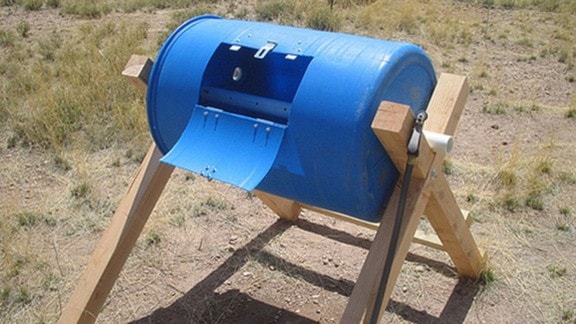“Eleanor, someone’s thrown a rusty bicycle wheel into your backyard!” I told my mother-in-law when I was doing a bit of weeding for her some years ago.
“Leave it there”, she said, “it’ll break down eventually”. She was right, it’s just a matter of time. Almost everything will compost, except, perhaps, ubiquitous elastic bands and pieces of plastic that somehow return to my heap every year, and I don’t even want to discuss the sock I found in it last spring.
Not everything that composts will produce a great garden though. Terrific compost that produces nutrient-dense vegetables requires a bit more thought and is worth the effort. With these rains that remove nutrients every winter local gardeners must, more than folks in any other climate, replenish these losses, and well-made compost can be a big part of this.
Studies have shown that compost breaks down the best when it’s in a stack four feet wide by four to five feet high, to begin with. It can be as long as you like (this is called a windrow) if you have the room.
You don’t want the compost to cook too quickly or it will off-gas ammonia instead of retaining nitrogen and your heap may show little return for the amount of material put in. Adding soil to the heap slows down this loss by inoculating the heap with bacteria that capture the ammonia and keep it in the heap as nitrogen. About five per cent soil per heap has been shown to work best. If the heap seems to be heating up too quickly, tear it apart and add some more soil and re-moisten because it probably has dried out in the middle.
Years ago I tried using an oil-drum that I had read worked like a charm and produced compost quickly. I cut out an access panel, made a stand, filled it up with composting materials and turned it every day. Obviously much of this compost off-gassed because I ended up with about ten per cent of what went in. After several equally-disappointing results I finally abandoned what I had thought was the answer to my composting prayers and had fond thoughts toward my mother-in-law when I finally laid the oil drum to rest at the landfill and returned to my four-foot-wide bin.
I’ve never tried those plastic cans with an opening at the bottom from which you shovel out finished compost, but I’ve read that they produce fairly decent compost, albeit in smaller amounts. Last year I scrounged up many containers of spent coffee grounds, seaweed and buckets of clay for the heap and added rock phosphate, so I am eager to see how it looks once the lids unfreeze on the bins.
The ratio of carbon materials to green or nitrogenous materials also affects the rate of decomposition, but that will have to wait for a future column.
Please contact mary_lowther@yahoo.ca with questions and suggestions since I need all the help I can get.
